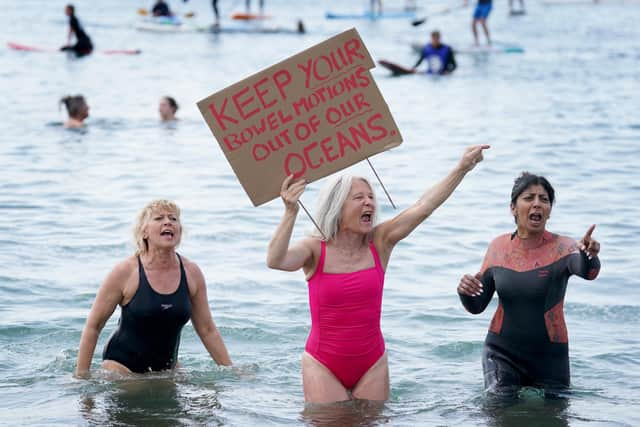Why Scottish Water may struggle to stop sewage overflows into rivers and onto beaches – Dr Richard Dixon
In the late 1990s, I helped persuade the Scottish Government to increase the number of official bathing beaches in Scotland from a paltry 23 to more than 60. One of the things I discovered was that the government and the water industry were ignoring climate change when they were planning investment in sewage systems.
New systems were being put in and old systems were being upgraded using the rule that they should only ‘spill’ three times during the summer bathing season. Now you and I might think that three spills of mixed street runoff and raw sewage going into rivers and making its way to our beaches is three spills too many.
Advertisement
Hide AdAdvertisement
Hide AdBut what the three water authorities ignored were the predictions that climate change would mean more extreme weather, including more heavy rainfall events – the thing that overwhelms the sewage system and leads to the overflows that dump sewage into the environment. So three spills a season would become ten spills or 20 spills a season.
When I pointed this out, I was told that those in charge of approving infrastructure investment for the three water authorities did not think that this kind of forward planning was good value for money… Average rainfall has been increasing in Scotland since the 1960s, with 20 per cent more rain now than the 1950s, and more of it coming as heavy and prolonged downpours. Seven of the ten wettest years on record in Scotland have been since 1989 in records that go back nearly 190 years.
The predictions are that climate change will give us drier summers, but with more days of heavy rain. Winters are likely to be significantly wetter, with the north of Scotland already seeing almost 70 per cent more rain or snow in the winter than in the early 1960s. The official bathing season runs from the start of June to mid-September but anyone living near a beach knows that swimming and surfing are now year-round activities.
Although work has been done to prioritise upgrades which protect bathing waters, many older systems are already spilling many times a year into rivers, a few of them hundreds of times a year. Facing mounting criticism, the English water companies have apologised for the current state of affairs, and promised to spend £10 billion to make things better. Of course, this money will be coming from bill-payers.
It is worth remembering that Scottish Water is not a private company like those English water companies. After a massive referendum vote to keep water supply and sewage services in public ownership, it was created from the three existing water authorities as a public body.


At the time of privatisation, the English water companies started with a clean slate, so they would be attractive to private investors, but Scottish Water had to carry over the debts and liabilities from its predecessors. Recently it has been under pressure from the Scottish Government to keep charges low because of the cost-of-living crisis.
The sewage overflow crisis needs massive investment but pressures on bills mean it could be a very long time coming.
Dr Richard Dixon is an environmental campaigner and consultant
Comments
Want to join the conversation? Please or to comment on this article.